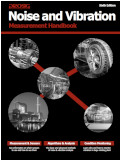Noise & Vibration Analysis: Back To Basics
Sometimes it doesn't hurt to revisit some of the basic building blocks that form the foundation of what we do. And so we have gathered together a few of our…
Sometimes it doesn't hurt to revisit some of the basic building blocks that form the foundation of what we do. And so we have gathered together a few of our…
This post covers how to upsample and downsample data and the possible pitfalls of this process. Before we cover the technical details let us first explain what we mean by upsample…
When analyzing rotating shafts some terms are often confused. This post will attempt to explain the differences. So, what are vibration, torsional vibration and twist? What is Vibration? We measure at…
We've been carefully tracking acoustics related tweets on Twitter and present here a few of the highlights. We do this sort of thing so that you don't have to. Don't…
Richard O'Sullivan is a respected engineer who has worked throughout the world on noise & vibration measurement solutions in automotive, aerospace and beyond. Hear about some of the problems he…
Nyquist theory is generally understood, but this understanding usually relates to time sampling and the conversion to the frequency domain. Rotational order analysis and the effect of the Nyquist frequency…
This tutorial guides a DATS user through the steps required to perform a moving average on a given signal. The tutorial explains the concept of the ‘Integration Length’ and the ‘Output Interval Step’.
Initially a signal is required to perform the moving average on. In this tutorial a sine wave will be generated. A sine wave is generated using the parameters shown in Figure 1.

The following was written by Adrian Lincoln in response to a customer asking about averaging Frequency Response Functions (FRFs) Further to your reply it should be noted that there is…
Seismic Qualification Testing for US Nuclear Power Generating Stations Part 1 (Random Vibration Testing) The nuclear power industry in North America (USA, Canada & Mexico) requires seismic qualification testing for…
Exhaust Vibration Measurement - Customer Requirement One of Prosig's customers needed to perform exhaust vibration measurement on some of their vehicles. They contracted Prosig to take the measurements and provide reports of the…
Amplitude Quantization Error - Summary This article explains what amplitude quantization error is and what can be done to avoid it. Typically quantization error is caused during acquisition of data.…
There are many ways to calculate speech articulation index and each has its advantages in different applications. Prosig's DATS includes four methods for evaluating the Articulation Index as seen in the table…
As its name suggests Operational Deflection Shape analysis shows the vibration pattern experienced during normal operational condition. This is different to other structural vibration tests such as impact hammer tests, bump tests or shaker tests which require a more controlled excitation force and are used to determine specific characteristics of the structure under test, such as natural or resonant frequencies.
Having played the trumpet for over 10 years I have left many an orchestral rehearsal with my ears ringing courtesy of the onslaught of noise from the trombone section behind me. In searching for a topic for my final year research project as part of my studies at Southampton University, the risk of hearing loss to orchestral musicians seemed a natural choice.
When dealing with some vibration data from a pump, we observed some strange phenomena in the data. It turned out to be a classic case of amplitude modulation. Here we explain what that means.
Are you attending the SAE 2015 Noise and Vibration Conference and Exhibition in Grand Rapids, Michigan, USA from 22nd to 25th June 2015? Why not go and see Dr Colin Mercer,…
Whole Body Vibration (WBV) analysis for continuous vibration uses assessment criteria defined in the ISO2631 standard and the EEC vibration directive 2002/44/EC. These assessments are based on the processing of…
The maximum analysis frequency is always half the sample rate of the input signal.
So if your data is captured at 50kHz the maximum analysis frequency will be 25kHz.
Prosig was contracted by Imperial Electric in Akron, Ohio to integrate a system for end of line vibration test for electric motors they manufacture. The requirement was to qualify motors under…
The RMS of a time history is a measure of the signal's overall energy and is often used when extracting features from a signal for prognosis and trending of vibration…
The intention of this article is not to present any new scientific theories or ground breaking techniques, but to introduce new users to hammer impact testing and remind seasoned technicians of a method…
Operating Deflection Shape (ODS) analysis is a method used for visualisation of the vibration patterns of a machine or structure caused by unknown operating forces. This is different from the study of the…
Let us try to understand what waterfall frequency spacing is. Waterfall frequency spacing is the gap between spectral lines in an FFT plot.
For example, if you had an analysis frequency of 0Hz to 100Hz and 100 spectral lines, then Frequency Spacing is 1Hz.
So why is there a ‘Requested Frequency Spacing’ and an ‘Actual Frequency Spacing’? (more…)
When analysing a waterfall or performing order analysis it is important to consider the frequency resolution or the frequency spacing.
There is often a desire to increase the resolution to finer and finer detail. But that is a process of diminishing returns, and actually fraught with danger. And that danger is waterfall smearing. (more…)
In the DATS Multiplane Balancing Software, there are two options, optimise for ‘Zero imbalance’ or optimise for ‘Specified imbalance’, but what is the objective of these two options?
(more…)
